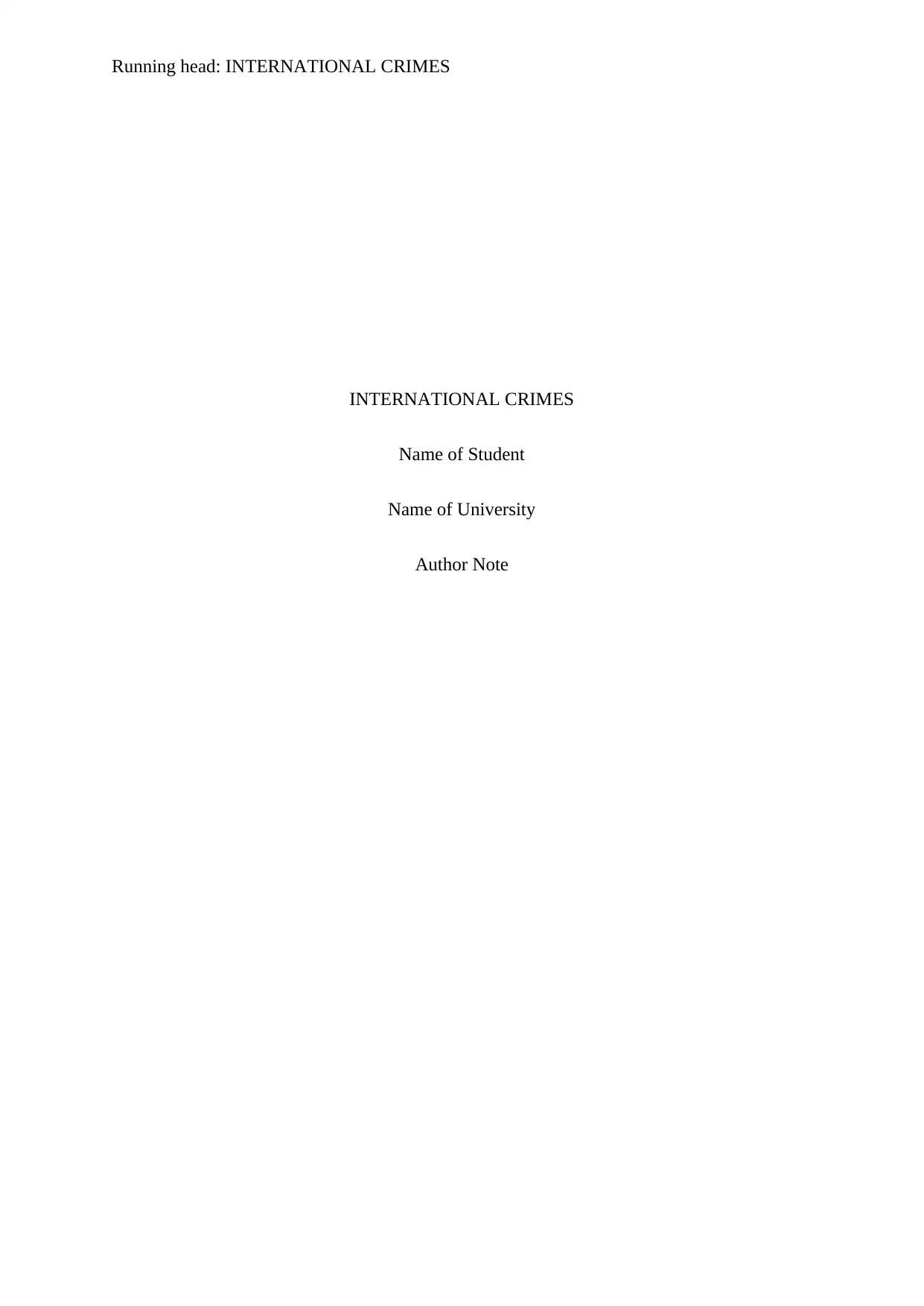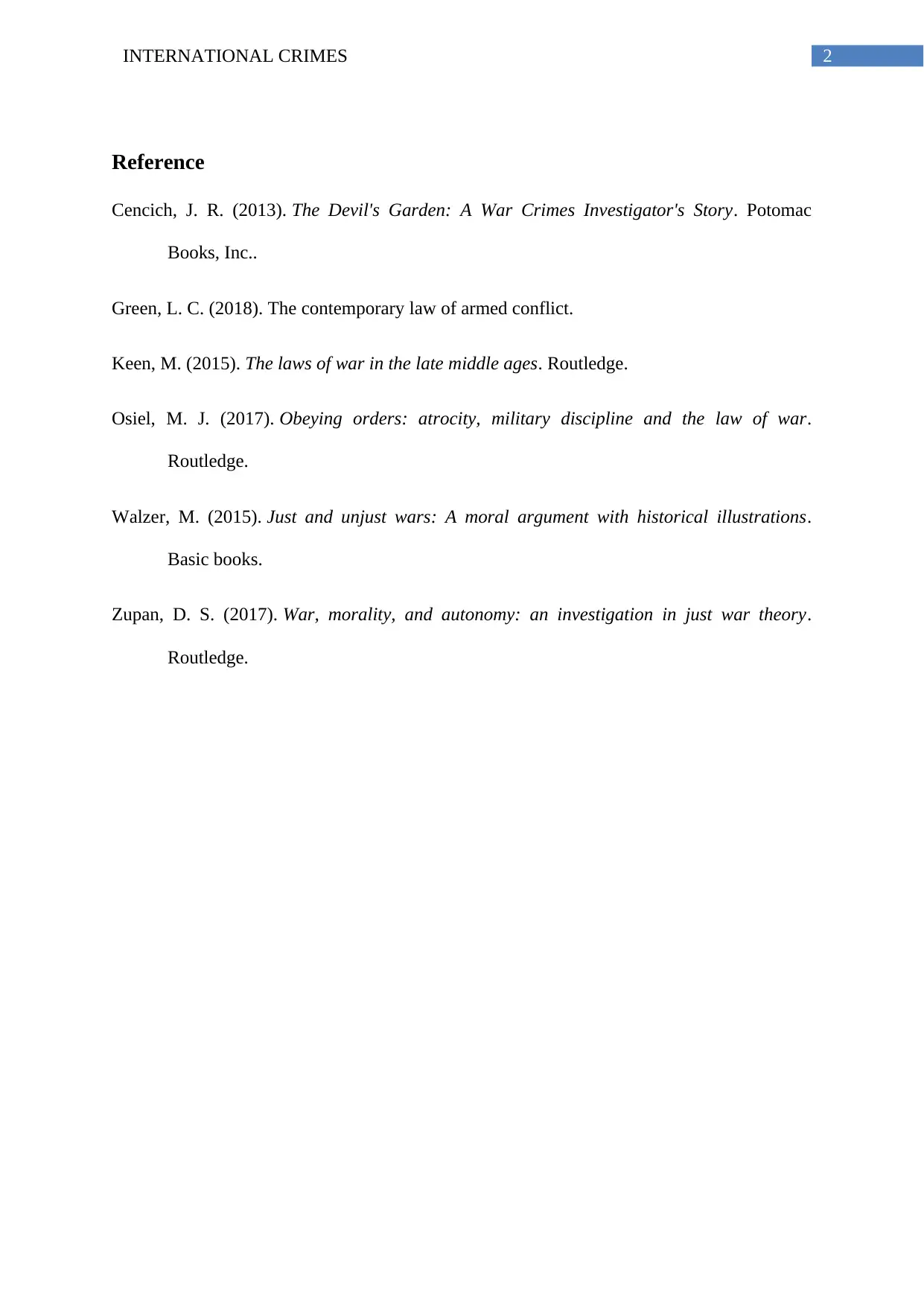International Crimes: Case Study Analysis and Legal Implications
VerifiedAdded on 2022/08/31
|3
|475
|27
Report
AI Summary
This report analyzes a case study involving international crimes, specifically focusing on the murder of two Spanish Legionnaires who were also United Nations peacekeepers. The analysis delves into the legal implications of the crime, including the applicability of the laws of war and the defense of superior orders. The report examines evidence from the crime scene, such as the location of the gunfire and the existence of a cease-fire agreement, to determine the legality of the killing. It also references the International Criminal Tribunal for the former Yugoslavia (ICTY) rulings to support its arguments. The report concludes that the killing was unlawful, as it violated the laws of war and the cease-fire agreement, and that the defense of superior orders would not be valid. The report also emphasizes the significance of protecting innocent lives during armed conflict.
1 out of 3




![[object Object]](/_next/static/media/star-bottom.7253800d.svg)